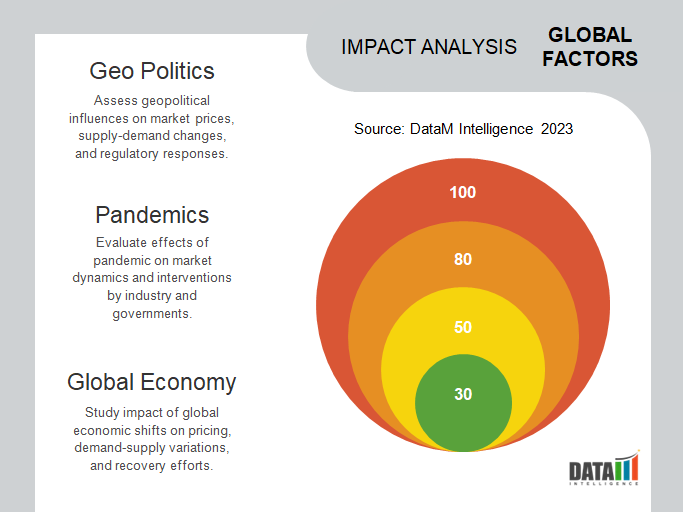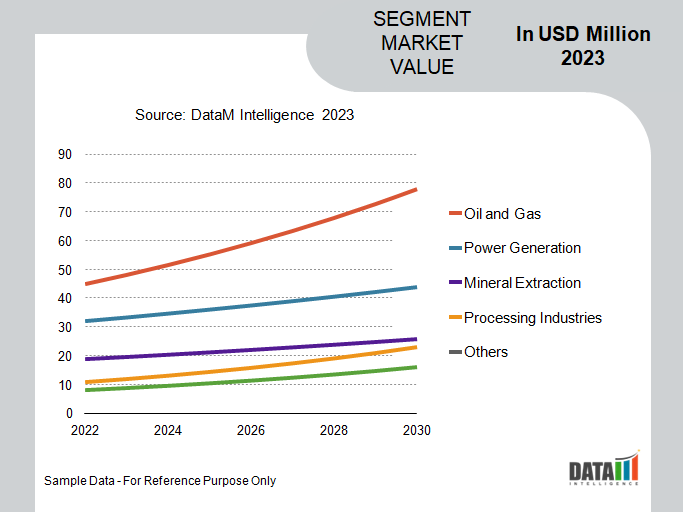E-House Market Overview
(180 pages) Global global E-House market to grow at a high CAGR Of 7.25% during the forecast period 2024- 2031. The market is expected to grow because it is used in Oil and Gas, Power Generation, Mineral Extraction, Processing Industries. The competitive rivalry intensifies with Siemens AG, Matelec., Aktif Group, and others operating in the market.

E-House Market Scope
| Metrics | Details |
| Market CAGR | 7.25% |
| Segments Covered | By Type, By Voltage Type, By Application, and By Region |
| Report Insights Covered | Competitive Landscape Analysis, Company Profile Analysis, Market Size, Share, Growth, Demand, Recent Developments, Mergers and acquisitions, New Product Launches, Growth Strategies, Revenue Analysis, and Other vital insights. |
| Fastest Growing Region | Asia Pacific |
| Largest Market Share | North America |
To know more insights Download Sample
E-Houses are modular power substations that are pre-assembled, customized, and pre-tested for usage in instances when temporary charging solutions are required or in difficult-to-reach regions.
E-houses find applications in numerous industries and infrastructures globally and are prevalent among network operators. They could be installed on a wheel or a skid and are ready to use in the field with little setup, commissioning, and start-up time. They can be a viable alternative to traditional on-site buildings.
Market Dynamics
The growth associated with investments in infrastructure projects
Economic progress and quality of life depend on a well-functioning, modern infrastructure. Infrastructure is essential to people and businesses everywhere, from the roads and trains that carry people and commodities to the power plants and communications networks that support household and industrial activities associated with the basic human need for clean water and sanitation.
As per Oxford Economics, Between 2016 and 2040, US$ 94 trillion in global infrastructure investment would take place, with at least US$ 3.7 trillion in assets each year. The expected growth is 19% more than expected under present trends. Since e-houses are modular, sleek, cost-effective, and could build close to the load stations, thereby is an asset to power generation or utilization grids required for all sorts of infrastructure developments. The demand for e-houses proliferates with the growth investments associated with infrastructure projects.
The exorbitant price associated with product maintenance and spare parts price
Since e-houses come with advanced equipment and complicated electrical connections and devices, the price point of these devices is colossal compared to typical pre-fabricated, factory-made housing solutions. For instance, as per data, the minimum cost associated with an e-house is US$ 3,868.11.
Furthermore, an electrical house has one or more switchgear, automated sensors, a control power distribution board, and other components with significant maintenance costs, which limits the usage of e-house in businesses with low investment potential, stifling global market growth.
Additionally, the advanced array of electrical circuits and devices in an e-house requires trained people to diagnose and rectify system issues. As these diagnoses and rectifications need advanced equipment and technical skills, the availability of suitable technicians could be problematic and cost a lump sum. As a result, the electrical housing market's expansion is hampered by a lack of technical skills among laymen and the exorbitant monetary requirement in case of technical mishaps.
COVID-19 Impact on E-House Market Growth
The COVID-19 pandemic has boosted public awareness regarding health and sanitation; Electrical homes, also known as E-Houses, are custom-built modular power substations utilized in places where power is scarce. E-Houses are a great alternative to traditional power units, which take a long time to build. E-Houses can be readily erected anyplace and are ready to use right away. E-Houses find applications in various industries, including energy, transportation, mining, and oil & gas.

However, the lockdown associated with the pandemic and the necessity for social distancing made several vital markets such as mining, petroleum, and others consume a humongous sum of electricity to experienced severe delays and obstructions in their processes. The drop in electricity consumption in the different industries has impacted demand for e-Houses, whose primary application was to act as modular power substations in these markets. The decision of major oil firms to decrease E&P budgets due to the pandemic also affects e-house demand.
Although the level of investment cuts varies across the value chain, the COVID-19 epidemic has caused apex reductions in the upstream, midstream, and downstream sectors. The collapse of the building industry, combined with budget cuts for infrastructure development, has also severely hampered demand for temporary & flexible power supply at construction & infrastructure project sites.
Nevertheless, as economic conditions are expected to normalize following the second wave of COVID-19, growth in the e-house market is likely to happen due to the ability of e-houses to offer a are cost-effective, time-saving, secure realistic interim solutions that could reduce client expenditure by 20%.
Market Segmentation Analysis
The global e-house is segmented based on type, component, application, and region.
The oil and gas sector dominates the application segment of the market.
The market is segmented into oil and gas, power generation, mineral extraction, processing industries, and others based on the application. The oil and gas business dominates the market as the respective market has seen tremendous shale gas development across the globe, along with offshore deep-water exploration and production activities, due to technological advancements and the growing demand for energy the world over.
Because FPSO/FSO and wellhead platforms for offshore production and processing complexes require integrated electrical solutions, the demand for e-house in the oil and gas industry is rising rapidly and sales. Further, the manufacturing and oil & gas industry are expected to normalize following the second wave of COVID-19; the demand for e-houses in the oil and gas sector will rise due to the ability to provide cost-effective, safe, and realistic interim solutions that might cut expenditure.

Market Geographical Growth
North America holds the largest market share global e-house market.
North America dominates the market share for the e-house market and is expected to develop at the fastest rate throughout the forecast period. The primary reason behind the strong market base for e-houses in the region is the digital revolution that stormed the area. The digital process in varied sectors in the region presents enormous opportunities and advantages, improves operations, and increases flexibility throughout the power value chain. Installing digital switchgear already helps to improve operational efficiency by reducing the switchgear footprint in the substation room and maximizing energy use for switchgear operation, thereby further driving the global e-house market in the respective region.

The Middle East and Africa also exhibit significant growth in the market share for the e-house market and are expected to develop further throughout the forecast period. The primary reason behind the strong market base for e-houses in the region is the demand for utilities in Africa, coupled with the rising demand for e-houses from the oil and gas and mining industries in the Middle East since mining is a process where electricity is an indispensable resource to operate devices utilized in the oil and gas market.
For instance, countries such as Iraq, which is recovering from a long civil war, are projected to be a lucrative prospect in the future years as the government works to restore essential services such as power to citizens and businesses.
E-House Companies and Competitive Landscape
The e-house market is moderately competitive with the presence of global companies. Some of the key players contributing to the market's growth include Electroinnova Instalaciones y Maintenimientos SL, TGOOD Global Ltd., Matelec, Aktif Group, PME Power Solutions, EKOS Group, Efacec, Siemens AG, Atlas Electric, General Electric and among others.
The significant players adopt several growth strategies such as product launches, acquisitions, and collaborations, contributing to the E-House market's global growth.
- For instance, on February 19, 2019, Origin Pharma Packaging launched a piece of newly designed child-resistant jar packaging for the medicinal cannabis industry. The freshly prepared child-resistant jar supports the flower product, often prescribed as' buds' in certain European countries.
Siemens AG:
Overview: Siemens AG (Siemens) is a multinational technology corporation. The company focuses on manufacturing products that come under electrification, automation, and digitization. It also offers a wide range of customized solutions to meet specific needs. Siemens specializes in power generation, distribution, intelligent building infrastructure, and distributed energy systems. Siemens has R&D centers, manufacturing factories, warehouses, and sales offices globally and works with clients in various industries, including energy, healthcare, infrastructure, process and manufacturing, and more. The headquarters of Siemens is in Munich, Bavaria, Germany.
Product Portfolio: The company has a product portfolio of the product that includes:
HORIZONTAL FLOWPAK
- E-Houses: E-Houses manufactured by the company are modular power substations that are customized, pre-assembled and pre-tested. They're suitable for usage in instances when temporary solutions are required or in difficult-to-reach regions. The simple explanation for this is that they are simple to assemble and operate. They deliver a quick and flexible power source right where it's needed. E-Houses are a viable alternative to traditional power distribution systems and are placed in significant numbers where industries and infrastructure are located.
Key Development: On February 19, 2019, Siemens AG announced building seven modular power distribution facilities for MOL Group, a global oil and gas business in Hungary. The construction of the e-house will be completed by 2021. It will be built in Tiszajváros, northeast of Budapest, where ThyssenKrupp group plans to build a 400,000-square-meter petrochemical complex near existing industrial facilities.
The global e-house market report would provide access to approx. 61 market data tables, 56 figures, and 180 pages.


